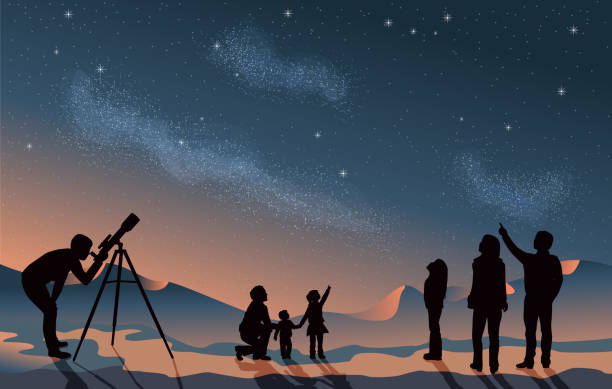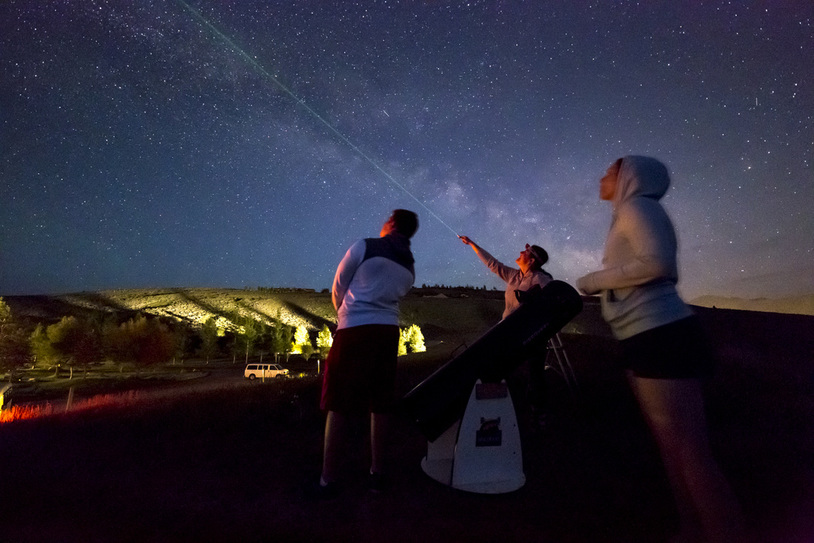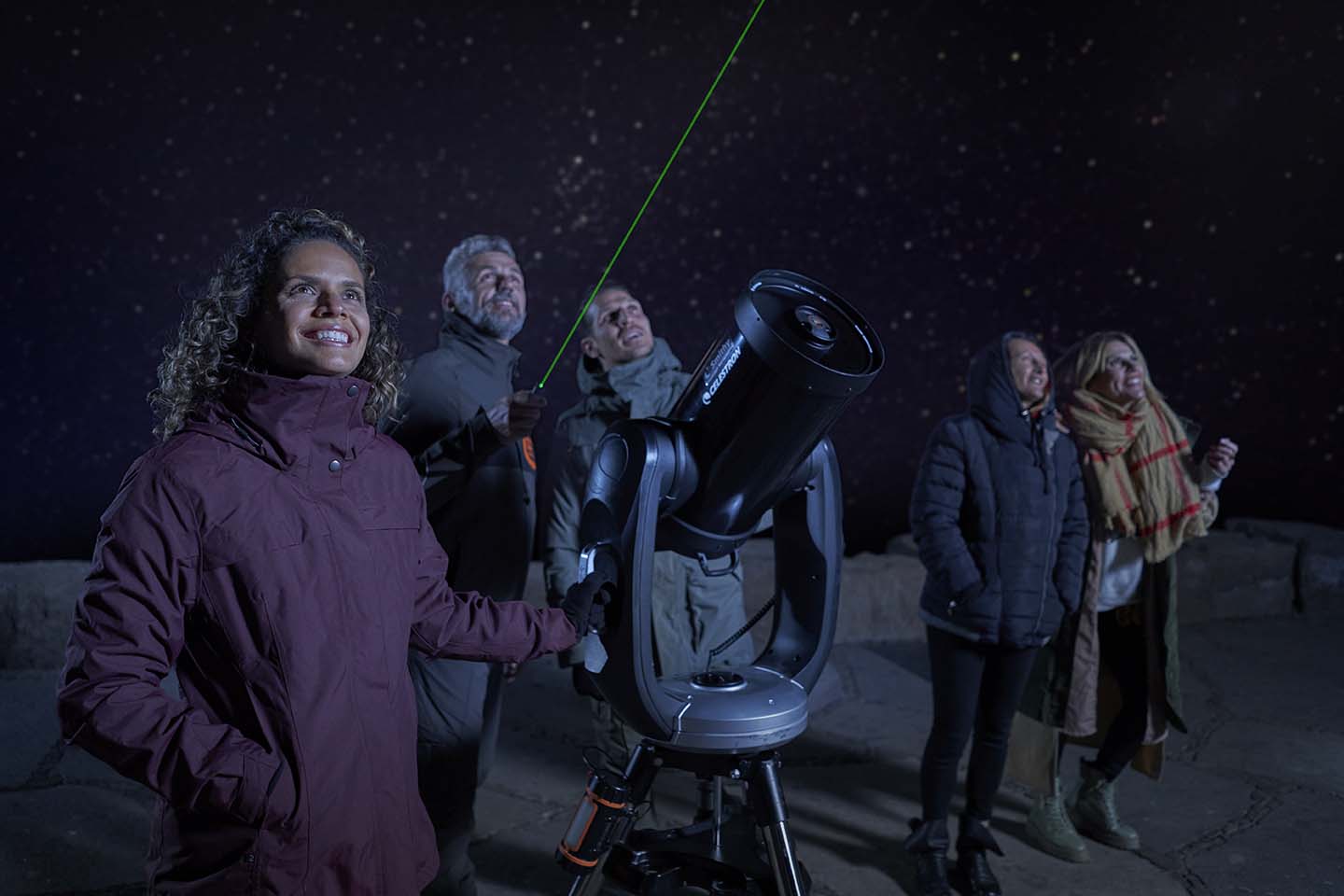The Beauty of Stargazing
 Gazing upwards at a night sky teeming with twinkling stars has captivated humanity for millennia. It's a humbling experience, a reminder of our place in the vast cosmos. But for those new to stargazing, the immensity of the night sky can be overwhelming. Fear not, aspiring astronomer! This guide will equip you with the knowledge and tools to navigate the celestial wonders above.
Gazing upwards at a night sky teeming with twinkling stars has captivated humanity for millennia. It's a humbling experience, a reminder of our place in the vast cosmos. But for those new to stargazing, the immensity of the night sky can be overwhelming. Fear not, aspiring astronomer! This guide will equip you with the knowledge and tools to navigate the celestial wonders above.
Stargazing offers a multitude of benefits beyond simply admiring a pretty night sky. It fosters a sense of wonder, igniting a curiosity about the universe and our place within it. It's a calming and stress-reducing activity, a chance to disconnect from the constant buzz of daily life and reconnect with nature's grandeur.
As you delve deeper, stargazing becomes an intellectual pursuit. You'll learn about the life cycles of stars, the formation of galaxies, and the ongoing quest to find life beyond Earth. It's a gateway to the fascinating realm of astronomy, a scientific discipline that seeks to understand the origins, evolution, and composition of our universe.
Essentials for Stargazing Success
Before embarking on your celestial adventure, gather a few essential tools:
Warm Clothes
 Nighttime temperatures can drop significantly, so dress in layers to stay comfortable throughout your observation session.
Nighttime temperatures can drop significantly, so dress in layers to stay comfortable throughout your observation session.
Red Flashlight
 Regular white light disrupts your night vision. A red flashlight, easily available at camping stores, preserves your ability to see faint stars.
Regular white light disrupts your night vision. A red flashlight, easily available at camping stores, preserves your ability to see faint stars.
Star Chart or App
A star chart, either physical or a smartphone app, will help you identify constellations, stars, and planets. Popular options include SkySafari, Stellarium Mobile, and Google Sky Map.
Binoculars (Optional)
While not essential for basic stargazing, binoculars enhance your view, allowing you to see the Milky Way galaxy in greater detail and discern features on the Moon's surface.
Telescope (Optional)
For the ultimate stargazing experience, consider investing in a telescope. However, telescopes require some knowledge to operate effectively. Start with the naked eye and progress to a telescope as you gain experience.
Finding the Perfect Observing Spot
 Light pollution is the enemy of stargazing. The more artificial light present, the fewer stars you'll be able to see. Ideally, seek out a location far from city lights. Look for a place with a clear, unobstructed view of the horizon. National parks, state parks, and rural areas are excellent choices.
Light pollution is the enemy of stargazing. The more artificial light present, the fewer stars you'll be able to see. Ideally, seek out a location far from city lights. Look for a place with a clear, unobstructed view of the horizon. National parks, state parks, and rural areas are excellent choices.
Once you've found your spot, allow your eyes at least 20-30 minutes to adjust to the darkness. This process, called dark adaptation, significantly improves your ability to see faint celestial objects.
Let's Go Stargazing!
With your essentials packed and your observing location chosen, it's time to explore the wonders of the night sky!
Start with the Naked Eye
Begin by simply lying down or sitting comfortably and taking in the vastness of the sky. Look for prominent constellations like Ursa Major (the Great Bear), Orion the Hunter, and Cassiopeia. Familiarize yourself with the brighter stars, such as Sirius, the brightest star in the night sky.
Explore the Milky Way
Our galaxy, the Milky Way, appears as a faint, hazy band of light stretching across the sky. In areas with minimal light pollution, you might even be able to discern some of the dark nebulae within it.
Spot the Planets
Planets, unlike stars, don't twinkle. They appear as steady points of light and can sometimes be identified with the naked eye. Look for Venus, the brightest planet, and Jupiter, the largest planet in our solar system. Consult your star chart or app to track planetary movements and identify them in the night sky.
Marvel at the Moon
Our nearest celestial neighbor, the Moon, is a fascinating object to observe. With binoculars or a telescope, you can examine its craters, mountains, and plains.
As your stargazing skills develop, venture beyond the naked eye and explore the realm of deep-sky objects. These are faint celestial wonders that include galaxies, nebulae, and star clusters. While some, like the Andromeda Galaxy, are visible with the naked eye under dark skies, most require binoculars or a telescope for detailed observation.
A star chart or app will guide you to locate these deep-sky objects. Be prepared – they are often faint and require patience to observe effectively.
Stargazing doesn't have to be a solitary pursuit. Many astronomy clubs host stargazing parties at public observing locations. These events offer a chance to learn from experienced astronomers, use




































































